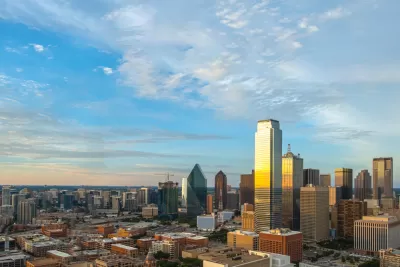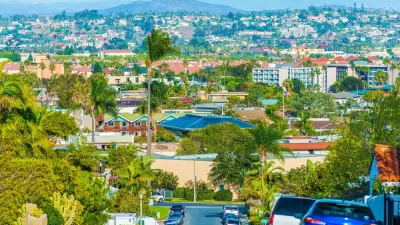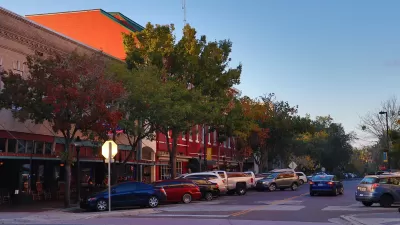The City Council's decision to allow increased density for a development of single-family homes has received strong opposition from neighbors.

A rezoning approval in Dallas is spurring backlash from the community, reports Matt Goodman. The City Council voted to upzone the 3.5-acre lot owned by the city to allow for the construction of 26 single-family homes in an area that would have previously only allowed for nine on a lot of that size. Money from the purchase would fund the refurbishment of a local library, per the bond covenant created in 2006 when the city bought the parcel. As Goodman writes, this is a only small increase in density. "This is not an affordable housing story. It’s not market rate apartments." The homes, if built, will sell for over $1 million each.
The majority of the city council supported the proposal. "The city will never build its way out of its housing shortage if it allows neighborhoods to remain in stasis, particularly with a plot of land that has sat unused for more than a decade."
But neighbors want to see fewer homes, despite assurances from city engineers that the development would not have a negative impact on traffic and concessions from the developer that include "larger setbacks, no second-story windows on homes facing the neighborhood, moving the power lines, planting more trees and replacing any that die or are damaged, installing 6-foot-wide sidewalks."
The council's decision to move forward with the rezoning could impact future developments in other parts of the city.
FULL STORY: North Dallas Is Getting a Little More Density and Some Neighbors Are Furious

Trump Administration Could Effectively End Housing Voucher Program
Federal officials are eyeing major cuts to the Section 8 program that helps millions of low-income households pay rent.

Planetizen Federal Action Tracker
A weekly monitor of how Trump’s orders and actions are impacting planners and planning in America.

Ken Jennings Launches Transit Web Series
The Jeopardy champ wants you to ride public transit.

Washington Legislature Passes Rent Increase Cap
A bill that caps rent increases at 7 percent plus inflation is headed to the governor’s desk.

From Planning to Action: How LA County Is Rethinking Climate Resilience
Chief Sustainability Officer Rita Kampalath outlines the County’s shift from planning to implementation in its climate resilience efforts, emphasizing cross-departmental coordination, updated recovery strategies, and the need for flexible funding.

New Mexico Aging Department Commits to Helping Seniors Age ‘In Place’ and ‘Autonomously’ in New Draft Plan
As New Mexico’s population of seniors continues to grow, the state’s aging department is proposing expanded initiatives to help seniors maintain their autonomy while also supporting family caregivers.
Urban Design for Planners 1: Software Tools
This six-course series explores essential urban design concepts using open source software and equips planners with the tools they need to participate fully in the urban design process.
Planning for Universal Design
Learn the tools for implementing Universal Design in planning regulations.
Heyer Gruel & Associates PA
Ada County Highway District
Institute for Housing and Urban Development Studies (IHS)
City of Grandview
Harvard GSD Executive Education
Toledo-Lucas County Plan Commissions
Salt Lake City
NYU Wagner Graduate School of Public Service





























